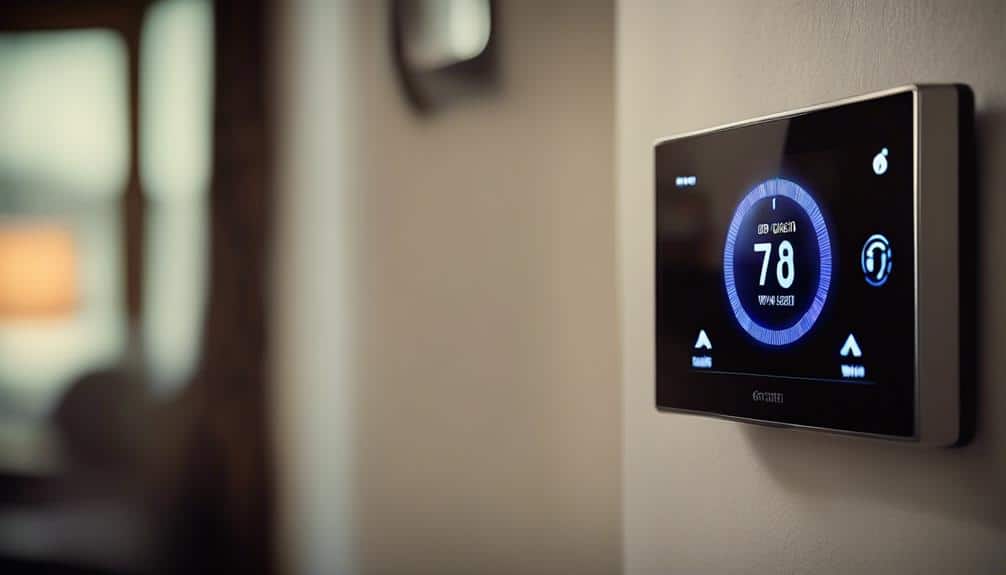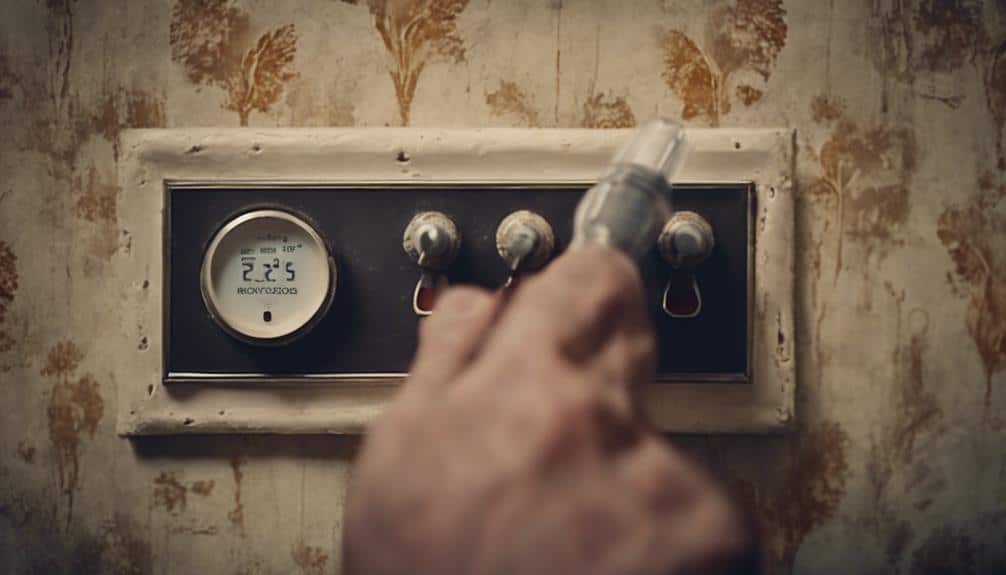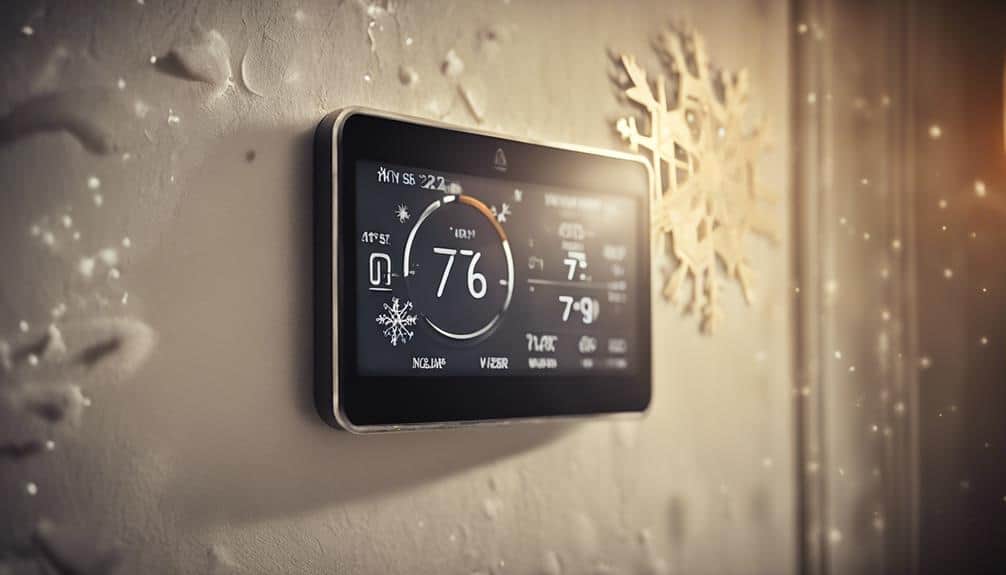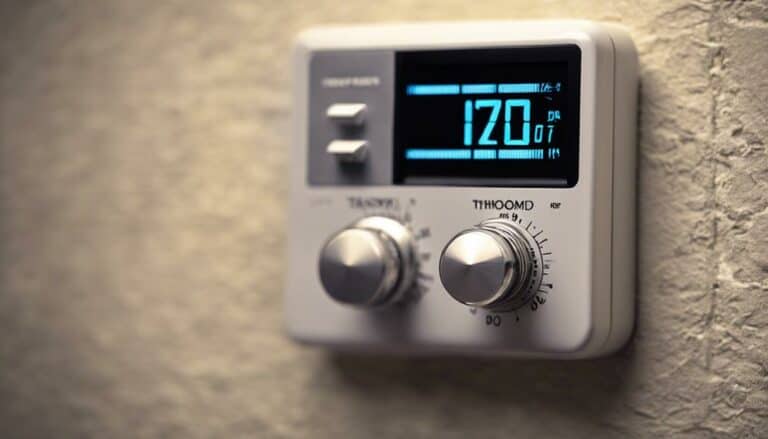In the world of home upgrades, installing a new thermostat in an old house is akin to teaching an old dog new tricks—challenging but entirely possible. You've got to take into account wiring requirements, compatibility with your HVAC system, and choosing the right smart thermostat.
Let's not forget the importance of proper installation and optimizing climate control. I'll guide you through these steps, ensuring you don't get left in the cold (or heat). By the end, you'll see how these changes can transform your home's comfort and efficiency.
Curious about how to make it happen? Stick around, and we'll explore these critical tips together.
Key Takeaways
- Verify HVAC system compatibility before selecting a new thermostat.
- Consider installing a C wire for enhanced thermostat functionality.
- Choose a smart thermostat for energy savings and remote control features.
- Seek professional advice for installation to ensure compatibility and efficiency.
Assessing Compatibility
Before diving into the world of modern thermostats, it's important to check if your old home's HVAC system is up for the task. You'll want to confirm that the thermostat you're eyeing is compatible with the older wiring system often found in such homes.
It's critical to verify whether your heating and cooling equipment can actually be controlled by a modern thermostat. Sometimes, you might need additional wiring or adapters to bridge the gap between new technology and old infrastructure.
Also, consider if the new thermostat's features will work well with your HVAC setup. Finding that perfect match means you can upgrade without hitting snags, keeping your home comfortable with the latest in temperature control technology.
Wiring Considerations

When upgrading your old home with a new thermostat, it's important to think about the wiring, especially the need for a third wire, known as the C wire, for best functionality.
| Feature | Without C Wire | With C Wire |
|---|---|---|
| Power Source | Battery-powered | Direct power |
| Installation | May need professional | Easier DIY or professional |
| Capabilities | Limited | Enhanced |
| Compatibility | Basic thermostats | Smart thermostats |
| Performance | Basic | Optimal |
Not having a C wire might limit your upgrade options, pushing you toward a battery-powered thermostat or necessitating professional installation. Adding a C wire, however, maximizes the full capabilities of smart thermostats and guarantees peak performance, making it a worthy consideration for your old home's wiring compatibility and future thermostat capabilities.
Choosing a Smart Thermostat

After considering your old home's wiring for a new thermostat, it's time to pick the smart thermostat that best fits your needs and lifestyle. Smart thermostats aren't just about guaranteeing; they're powerhouses of energy savings and lifestyle adjustments.
With programmable schedules, you can make sure your home is always comfortable without wasting energy. The remote control feature, via smartphones or voice assistants, adds a layer of convenience, letting you adjust settings from anywhere.
Integrating with home automation systems, these devices can streamline your life, offering energy usage reports to help track your savings. Plus, some have learning capabilities, adjusting to your preferences automatically. Choosing a smart thermostat means embracing a blend of convenience and energy savings, making it a wise move for your home.
Installation Tips

How do you guarantee a smooth installation of your new smart thermostat? First, know that upgrading to smart thermostats not only grants you better temperature control but also enhances energy efficiency. Assure a hiccup-free install by organizing and labeling your thermostat wires. This simple step prevents confusion and assures your HVAC system operates flawlessly with your new thermostat.
| Step | Tip | Why It Matters |
|---|---|---|
| Label Wires | Use clear labels before disconnecting | Avoids mix-ups, assures easy setup |
| Seek Professional Advice | Consult for wiring uncertainties | Prevents costly mistakes |
| Research Models | Find the best fit for your home setup | Optimizes comfort and energy savings |
Optimizing Climate Control

Having confirmed a smooth installation of your new smart thermostat, let's focus on how this upgrade can greatly enhance your home's climate control. Your new thermostat is key to transforming the atmosphere of your old home, ensuring every room is just the right temperature.
- Programmable Features: Set up custom schedules to automatically adjust the temperature, boosting your comfort and your home's energy efficiency.
- Remote Access: Adjust your settings from anywhere, ensuring your home is always welcoming, without wasting energy.
- HVAC System Integration: Your smart thermostat can work seamlessly with your HVAC system, supporting variable-speed compressors for ideal climate control.
This upgrade not only perfects temperature regulation but also significantly cuts down on energy consumption, making your old home smarter and more efficient.
Frequently Asked Questions
Can You Replace Old Thermostat With New Thermostat?
Yes, you can replace your old thermostat with a new one. First, do a compatibility check and wiring inspection. Make sure you've got the right installation tools, follow the user manual, and don't forget safety precautions!
What to Do Before Installing New Thermostat?
Before installing your new thermostat, you'll need to check the wiring, research compatibility, identify your old model, and gather installation tools. Don't forget to consult the user manual and take safety precautions by turning off the power source.
Do Smart Thermostats Work in Older Homes?
Yes, smart thermostats can work in older homes, but you'll need compatibility checks and wiring considerations. Retrofitting tips guarantee historical integrity while offering energy savings. Watch for installation challenges, connectivity issues, and system compatibility to maintain usability.
Does a New Thermostat Make a Difference?
Absolutely, a new thermostat can greatly impact your home's energy savings and comfort control. With features like temperature precision, maintenance alerts, and adaptive learning, you'll enjoy more control and convenience, even remotely.
Conclusion
So, you're set to upgrade your old home with a new thermostat. Remember, evaluating compatibility and understanding wiring are key.
Choose a smart thermostat that fits your lifestyle, and don't shy away from professional help for installation.
Finally, optimizing climate control can truly transform your home's comfort and efficiency.
Embrace these tips with confidence, and you'll not only boost your home's value but also enjoy the coziness and savings that come with a modern, smart thermostat.

